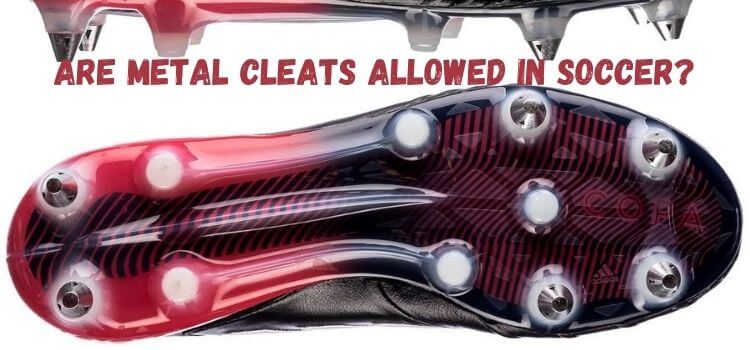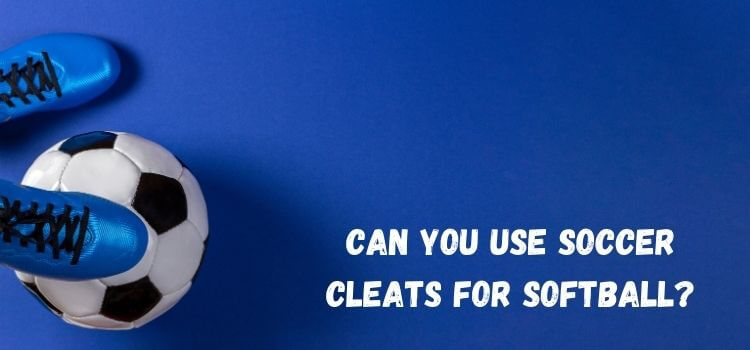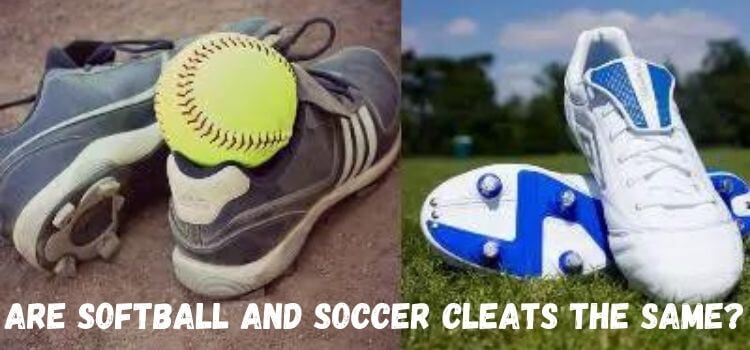As an Amazon Associate, I earn from qualifying purchases
Are metal cleats permissible on the soccer field? As avid players and enthusiasts seek the perfect gear to enhance performance, understanding footwear regulations is crucial. In this comprehensive guide, we’ll delve into the question, “Are metal cleats allowed in soccer?” and unravel the intricate nuances governing footwear choices in the beautiful game.
Whether you’re a seasoned athlete or a curious observer, let’s navigate through the rules and considerations regarding metal cleats in soccer to ensure you’re well-equipped for the pitch.
In soccer, the debate over the use of metal cleats has persisted for years. To shed light on this contentious issue, let’s explore the pros and cons of metal cleats and the regulations surrounding their usage.

What are Metal Cleats?
Metal cleats, or studs or spikes, are protrusions on the soles of soccer shoes designed to provide traction on the field. Traditionally, these cleats were made of metal, but modern iterations may incorporate other materials, such as plastic or rubber.
History of Metal Cleats in Soccer
The use of metal cleats in soccer dates back several decades. Initially, metal cleats were the primary choice among players due to their durability and superior grip on the ground. However, as concerns regarding player safety and field maintenance arose, regulations governing the use of metal cleats became more stringent.
Regulations on Soccer Cleats
FIFA Rules
Soccer’s governing body, FIFA, specifies what type of cleats are allowed in official matches. According to FIFA regulations, cleats must not pose any danger to players or opponents and should not damage the playing surface.
League Regulations
In addition to FIFA rules, individual leagues and organizations may enforce their regulations regarding soccer cleats. These regulations often align with FIFA guidelines but may include additional restrictions or specifications.
Advantages of Metal Cleats
Metal cleats offer several advantages, including enhanced traction, stability, and durability. In wet or muddy conditions, metal cleats can provide superior grip, allowing players to maintain control and agility on the field.
Disadvantages of Metal Cleats
Despite their benefits, metal cleats also have drawbacks. One primary concern is the potential for injury to the wearer and other players. The sharp edges of metal cleats can cause cuts or puncture wounds, especially in contact sports like soccer.
Additionally, metal cleats may contribute to excessive wear and tear on the playing surface, leading to increased maintenance costs.
Safety Concerns: Are metal cleats allowed in soccer?
Safety is paramount in soccer, and using metal cleats raises legitimate concerns. The risk of injury from metal cleats is heightened during tackles or collisions, increasing the likelihood of lacerations or abrasions. Furthermore, metal cleats may pose a hazard to opponents if used recklessly.
Alternatives to Metal Cleats
Many players opt for alternative cleat designs in response to safety concerns and regulatory restrictions. Rubber or plastic cleats offer comparable traction while reducing the risk of injury and field damage.
Hybrid cleats, which combine metal studs with non-metal components, provide a compromise between grip and safety.
Impact on Performance
The choice of cleats can significantly impact a player’s performance on the field. While metal cleats may offer superior traction in certain conditions, they can impede agility and manoeuvrability. Players must weigh the benefits against the potential drawbacks when selecting cleats for a match.
Player Preferences
Ultimately, the decision to wear metal cleats rests with the individual player. Some athletes prefer the stability and grip of metal cleats, while others prioritize safety and comfort. Player preferences may vary based on playing style, field conditions, and personal experience.
Environmental Impact
Beyond performance and safety considerations, the production and disposal of metal cleats raise environmental concerns. The extraction of metals and manufacturing processes associated with cleat production contribute to carbon emissions and resource depletion. Additionally, the disposal of worn-out cleats can further strain waste management systems.
Conclusion: Are metal cleats allowed in soccer?
In conclusion, while metal cleats offer advantages in terms of traction and durability, they also pose safety risks and environmental concerns. The regulations governing the use of metal cleats aim to balance performance, safety, and sustainability in soccer. Players must carefully consider these factors when choosing their footwear for the game.
Frequently Asked Questions (FAQs)
Most professional leagues adhere to FIFA regulations, which may restrict the use of metal cleats in official matches.
Metal cleats may provide superior traction in certain conditions, but their impact on overall performance varies among players.
Metal cleats are often more durable, but they may cause more damage to playing surfaces and pose more significant safety risks.
Some metal cleats feature adjustable studs or interchangeable components to adapt to various playing surfaces.
Rubber, plastic, and hybrid cleats offer safer alternatives to metal cleats while still providing traction on the field.
As an Amazon Associate, I earn from qualifying purchases


